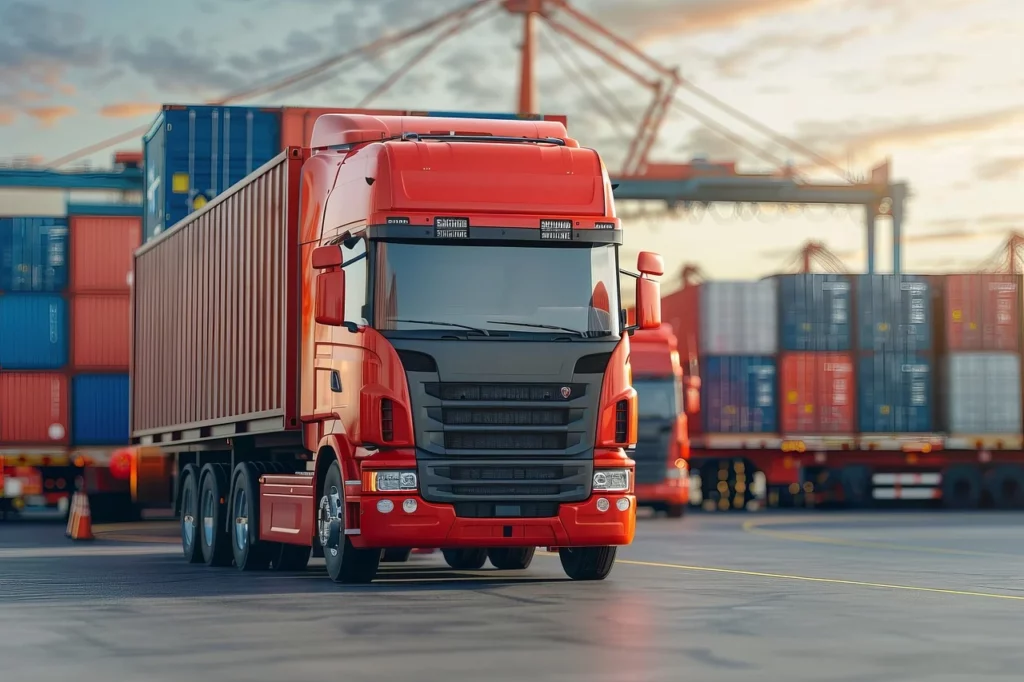Is autonomous trucking the solution to the driver shortage? The trucking industry is grappling with a severe lack of drivers. Can self-driving trucks fill the gap? This article explores the potential of autonomous trucks to solve this pressing issue.
Key Takeaways
The trucking industry faces an ongoing driver shortage, exacerbated by an aging workforce and high turnover rates, potentially reaching a deficit of over 160,000 by 2031.
Autonomous trucks present a viable solution to the driver shortage, enhancing operational efficiency, reducing costs, and allowing continuous operation without fatigue, but require significant initial investment and infrastructure improvements.
The transition to autonomous trucking could displace up to 300,000 driving jobs annually, while also creating new roles for oversight and management, demanding careful consideration of workforce impacts.
Understanding the Truck Driver Shortage

The trucking industry is experiencing a significant driver shortage, with the American Trucking Associations (ATA) reporting a deficit of around 80,000 drivers in 2022, potentially rising to over 160,000 by 2031. Contributing factors include an aging workforce, as many current drivers approach retirement, and difficulties in attracting young, qualified replacements.
The COVID-19 pandemic has worsened the driver shortage. Higher demand for goods and supply chain disruptions have strained the limited pool of truck drivers. High turnover rates, often due to the demanding nature of the job, long hours, and inadequate pay, add to the issue. Regulatory changes like the Drug & Alcohol Clearinghouse and the Electronic Logging Device (ELD) mandate have further limited the pool of eligible drivers, complicating workforce stability.
This shortage has tangible effects, leading to increased shipping costs, delivery delays, and reduced productivity across the supply chain. The Owner-Operator Independent Drivers Association (OOIDA) suggests that poor retention, rather than an actual lack of drivers, is the primary driver shortage problem.
With these challenges, the trucking industry faces an urgent need for a sustainable solution. Could autonomous trucks be the answer?
Autonomous Trucks: A Potential Solution?

Autonomous trucks have the potential to revolutionize the trucking industry by tackling the driver shortage. Unlike human drivers, self-driving trucks and driverless trucks can operate continuously without fatigue, significantly improving delivery times and operational efficiency, especially in an industry plagued by long hours and driver fatigue.
Self-driving technology allows logistics companies and trucking companies to enhance productivity and reduce transit times. Autonomous trucks can fill the gap left by the driver shortage, reducing reliance on human drivers. This shift is not merely theoretical; commercialization is rapidly progressing through collaborations among startups, OEMs, logistics firms, and self driving vehicles.
Integrating autonomous trucks is expected to enhance operational efficiency and lower costs, presenting a promising solution for the industry. As technology advances, the feasibility of self-driving trucks grows, offering a potential lifeline for an industry facing a driver shortage.
Current State of Autonomous Trucking Technology
Autonomous trucking technology has made remarkable progress recently. Advances in AI and sensor technology have accelerated development, making self-driving trucks more feasible than ever. Experts are optimistic about trucking automation, seeing it as a significant leap forward for the industry.
One notable development is the Aurora Driver, a self-driving system designed for various vehicle types, including freight-hauling trucks. This technology showcases significant advancements in autonomous vehicle capabilities, highlighting its potential for versatile and reliable solutions.
As technology evolves, the trucking industry stands to gain from increased efficiency and reduced reliance on human drivers. Anticipation for the widespread adoption of autonomous trucking technology is high.
Economic Implications of Self Driving Trucks

The economic implications of self-driving trucks are significant. They could reduce long-haul trucking costs by up to 30%, with analysts predicting potential savings of $168 billion annually for the freight industry, driven by increased operational efficiency and reduced labor costs.
However, the initial investment for each autonomous truck is substantial, ranging from $150,000 to $200,000 due to the costs of LiDAR sensors, radar, and AI systems. Despite high upfront costs, the long-term benefits, including greater efficiency and cost savings, make it a worthwhile investment for many companies.
Additionally, autonomous trucks will require infrastructure improvements. Investment in advanced powertrains and better infrastructure management is essential for successful integration. Despite significant investments, the potential economic benefits make autonomous trucks an attractive proposition for the industry’s future.
Safety and Regulatory Considerations
Safety is a critical concern for autonomous trucks. These vehicles aim to reduce accidents caused by driver fatigue and human error through automated features. However, challenges like performance in extreme weather conditions remain.
Regulations for autonomous trucking vary widely across regions. Federal and state rules are evolving, but often lag behind technological advancements, leading to significant compliance costs for companies. Public skepticism about driverless technology adds another layer of complexity to its adoption.
Insurance costs for self-driving trucks may initially be higher due to new risk assessments but could stabilize as more safety data becomes available. Addressing safety and regulatory concerns is crucial for successfully integrating autonomous trucks into the mainstream industry.
Impact on Truck Drivers and Jobs

The advent of autonomous trucks will significantly impact the job market for truck drivers, potentially leading to the loss of 300,000 US truck driving jobs per year. This economic disruption could affect millions of individuals reliant on the trucking industry.
However, the transition to autonomous trucking also creates new opportunities within the industry. Many existing driver roles may evolve into supervisory and technical positions. The global trucking fleet managers are expected to include half a million Level 4 autonomous vehicles, necessitating roles to oversee and manage these advanced systems.
While autonomous trucks pose employment challenges, they also offer potential for industry growth and evolution. Addressing the impact on truck drivers and ensuring a smooth transition will be key to successfully integrating autonomous technology.
Environmental Benefits of Autonomous Vehicles

Autonomous trucks offer significant environmental benefits. Research suggests they could enhance energy efficiency by up to 32%, significantly reducing emissions within the freight industry. Optimized driving patterns could lower greenhouse gas emissions by 10-15%.
These vehicles can also decrease fuel consumption by optimizing highway speeds, potentially saving up to 17% on fuel. Reducing idling during driver breaks could lower fuel wastage, which currently accounts for 4%-9% of total consumption.
The continuous operation of autonomous trucks allows for freight transport during off-peak hours, further reducing overall fuel consumption and traffic congestion.
Timeline for Mainstream Adoption
The timeline for mainstream adoption of autonomous trucks varies by region. Countries with established testing frameworks, like the U.S., Europe, and China, lead in developing autonomous trucking technologies. China is advancing rapidly due to strong government support and clear national guidelines.
Experts predict fully autonomous trucks could see wide adoption within the next 10 to 20 years, depending on the resolution of current challenges. Despite technical and regulatory hurdles, significant progress has been made, bringing us closer to a future with mainstream self-driving trucks.
Real-World Applications and Case Studies
Real-world applications already showcase the potential of autonomous trucks. Walmart has begun using fully automated vehicles for logistics operations, marking a significant step toward integrating autonomous trucking into supply chains. Gatik became the first company to conduct daily commercial deliveries without a human driver, initially operating for Walmart on short-haul routes.
Aurora’s autonomous trucks are transporting freight for multiple logistics companies, including FedEx and Uber Freight, as they prepare for a commercial launch. Additionally, Kodiak Robotics is partnering with the US Department of Defense to develop autonomous delivery vehicles for military use, expanding beyond commercial sectors.
Summary
The journey through the potential of autonomous trucks reveals a transformative solution to the trucking industry’s driver shortage. With the ability to operate continuously, autonomous trucks promise improved efficiency, reduced operational costs, and significant environmental benefits. However, the path to widespread adoption is fraught with technological, regulatory, and social challenges.
As we look towards the future, the successful integration of autonomous trucks will depend on addressing these hurdles and ensuring a smooth transition for all stakeholders, including truck drivers. The promise of autonomous trucking is bright, offering a glimpse into a more efficient, sustainable, and innovative future for the transportation industry.
Frequently Asked Questions
Is AI taking over truck driving?
AI is transforming truck driving jobs by shifting drivers into roles that involve overseeing AI operations and undertaking more strategic responsibilities, rather than replacing them entirely. Embracing this change can help drivers enhance their skill sets and remain valuable in the industry.
How can AI solve the current shortage of truck drivers?
AI can alleviate the truck driver shortage by enhancing safety through driver assistance systems, reducing operational costs with predictive maintenance, and optimizing routes for fuel efficiency, ultimately making the profession more manageable and attractive. Implementing these technologies will not only support existing drivers but help draw new talent into the industry.
Will autonomous trucks replace drivers?
Yes, autonomous trucks are expected to eventually replace many truck driver jobs, with the transition occurring gradually as the technology advances. This shift is likely to benefit shippers while significantly reducing the demand for human drivers.
How severe is the current truck driver shortage?
The current truck driver shortage is quite severe, with approximately 80,000 vacancies reported in 2022, and projections suggesting it could exceed 160,000 by 2031. This highlights a significant and growing challenge for the logistics industry.
What are the economic benefits of autonomous trucks?
Autonomous trucks can significantly lower long-haul trucking costs by up to 30%, yielding potential savings of $168 billion per year for the freight industry. This substantial reduction enhances efficiency and profitability within the sector.

